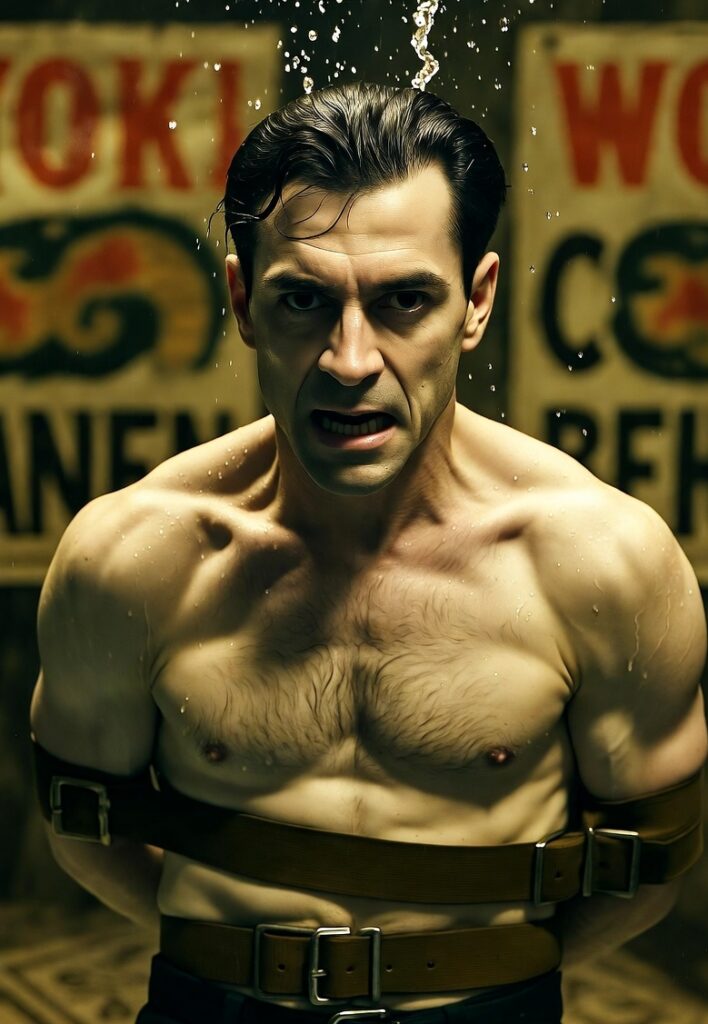
Woke up this morning and I got myself a beer,
The future’s uncertain and the end is always near.
~ James Douglas Morrison
I’m not afraid of death, and I’m not afraid of dying, but the idea of not existing is kind of a weird one that I have some trouble getting my mental arms around some nights. The whole issue of mortality has been very much on my mind, especially the last several years when various things have tried to kill me and I’ve had to ‘rassle them into submission. Each time, I’ve had the advantage of knowing that whatever I was dealing with at the time was simply not cool or interesting enough to be the actual Thing That Takes Me Out. Cancer? Nah. Heart attack? Hell no. Gunfight with federales at the Tijuana/San Ysidro border? Fuck yes. Losing a fight with a rattlesnake? I’ll take it.
But let’s talk about a real goddamn exit. Not the slow fade into nursing-home tapioca, but a final act that achieves the level of myth or legend. October 24, 1926, in Detroit, a city of steel and fury, where Houdini took his last bow. And what a bow it was. The man was burning up, a furnace of a fever scorching him from the inside out, his own appendix having staged a rather nasty and decidedly unmagical rebellion. A lesser mortal – say, you or I – would be curled up, mewling pitifully for a nurse. Not Uncle Harry.
Houdini, the ur-escapologist, the man who treated chains and straitjackets like they were merely inconvenient suggestions, dragged his fever-racked carcass onto the stage of the Garrick Theatre because the show must go on, goddammit. The contract was signed. The audience was there. And Harry Houdini, a man whose entire existence was a fuck you to limitations, wasn’t about to be undone by something as pedestrian as a ruptured internal organ. He stumbled, he sweated, he nearly collapsed, but he finished the show. A week later, the curtain came down for good. Peritonitis. A messy, biological trap even he couldn’t pick the lock on.
But the death seems almost incidental. A footnote. The legend is what matters. Much more than just a magician, Houdini was a walking, breathing, fist-swinging piece of American folklore. You can draw a straight, jagged line from Houdini’s on-stage battles to the very heart of certain narrative traditions. He engaged in a public, ink-soaked war with Sir Arthur Conan Doyle, the creator of the world’s most logical mind, over the fuzzy, ectoplasmic nonsense of Spiritualism. Houdini, the ultimate illusionist, dedicated his life to exposing the fraudulent tricks of others, a crusade that was equal parts public service and some pretty amazing, high-minded flexing. He even put his money where his mouth was and wrote, peeling back the curtain with a surprising authorial flair. His book, The Unmasking of Robert-Houdin, is a meticulously constructed argument, a writerly vivisection of the very art form he perfected.
Then you have the fictional echoes, with his shadow falling across the pages of guys like E.L. Doctorow. In Ragtime, Houdini is a symbol of human defiance against the locked doors of class, race, and fate.
That final, agonizing performance in Detroit was the apotheosis of it all. Battered, poisoned from within, but utterly unbowed. He took the stage knowing, I’m sure, on some primal level, that this was the end of the road. He faced the abyss not with a whimper, but with a card trick. And that is rather badass. He didn’t just escape handcuffs and water torture chambers. On that last night, he made a damn good attempt at escaping mortality itself, turning his own death into the one story that, nearly a century late, still refuses to be buried.
N.P.: “Circle of Samhain” – Slaev
Somebody thought they could leave a comment!